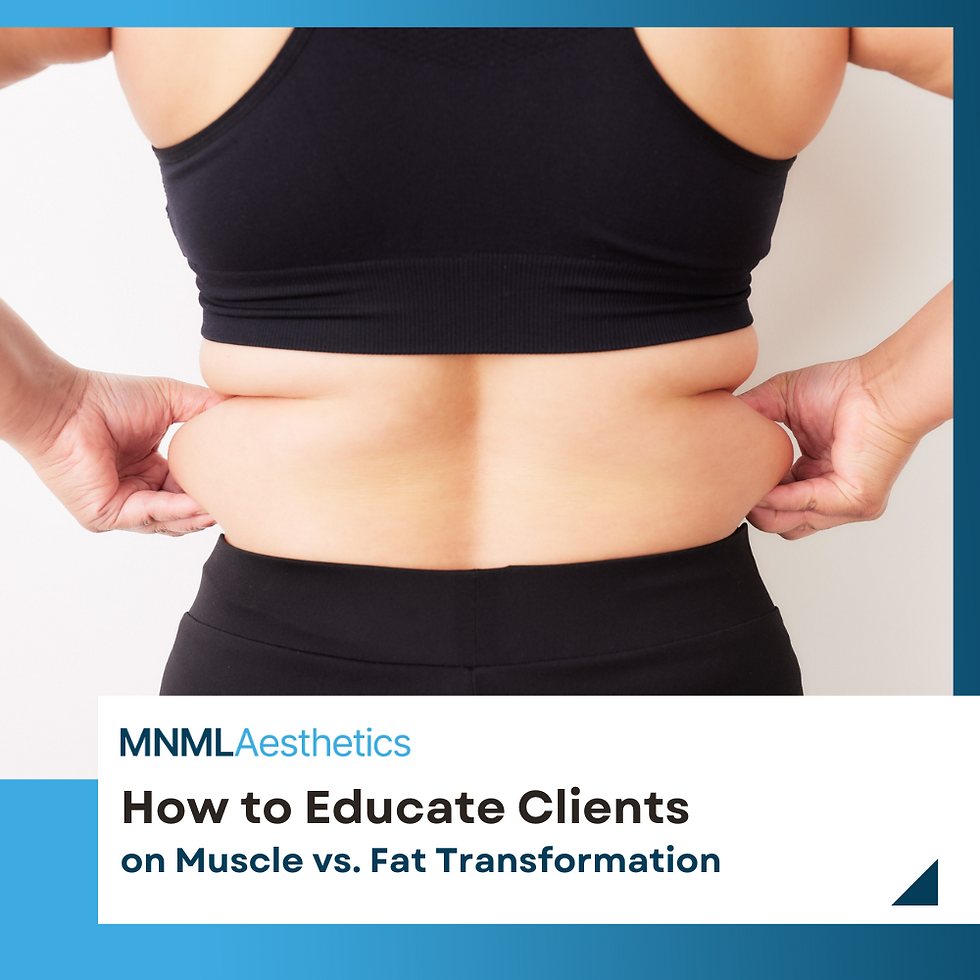How to Educate Clients on Muscle vs. Fat Transformation
- Jack Burrows
- Jul 7
- 2 min read
Updated: Aug 13

Understanding Client Confusion Around Body Goals
When clients come in asking to 'lose weight' or 'tone up,' their goals often blend fat loss and muscle development without understanding the key differences. As practitioners, it’s critical to help clients identify what they actually want: is it visible muscle definition, a slimmer waistline, improved posture, or all of the above?The first step to improving outcomes and satisfaction is resolving this confusion during consultation. Without clear definitions, expectations can misalign with the treatment protocol, leading to frustration or early dropout.
Scientific Explanation of Lean Mass vs. Fat Mass
Fat mass refers to adipose tissue stored in the body, while lean mass includes muscles, bones, organs, and fluids. From an aesthetic perspective, the muscle-to-fat ratio plays a major role in body shape and firmness.- Fat is soft, shapeless, and metabolically passive- Muscle is dense, firm, and metabolically activeA pound of muscle takes up significantly less space than a pound of fat. This is why clients may weigh the same but look dramatically different after gaining lean mass and reducing fat. Educating clients on this science shifts the focus from the number on the scale to visible transformation and performance benefits.
Using Visual Tools Like ShapeScale to Demonstrate Difference
3D body scanning tools like ShapeScale are instrumental in educating clients about their own body composition. Rather than relying on weight or BMI, these tools provide:- Detailed body avatars- Lean mass vs. fat mass breakdowns- Regional fat analysis- Side-by-side visual comparisonsThese visuals make the abstract tangible. When a client sees their abdominal lean mass increase while fat mass decreases, they understand the value of the program—even if the scale barely moves.
Reframing the Conversation: Strength, Metabolism, Aesthetics
Clients often default to the word 'weight' when they really mean 'shape' or 'feeling.' Reframing their language helps build better treatment alignment. Talk to clients in terms of:- Functional strength and posture- Resting metabolic rate improvements- Skin tightness and silhouette contouringPosition EMS-based muscle toning as a long-term metabolic upgrade, not just a short-term fix. This fosters buy-in and positions your clinic as a science-driven solution provider.
Client Education Materials and In-Consult Scripts
Effective education is repeatable and visual. Equip your team with:- Simple charts explaining fat vs. muscle volume- Before-and-after ShapeScale visuals- Metaphors and analogies (e.g., 'muscle is compact like steak; fat is bulky like marshmallow')- Scripts that guide clients through their scan dataThe more tools your team has, the more confident they’ll be in selling value-based transformations over commodity treatments.
Tracking and Showcasing Results Over Time
Muscle gain and fat loss don’t always happen linearly, which is why tracking is crucial. Use scheduled re-scans every 2–4 weeks to highlight changes, validate the plan, and build momentum.Documented progress:- Strengthens trust- Encourages rebooking- Minimizes refund requestsCelebrate non-scale victories with clients. Show them how their waist shrank, posture improved, or glutes lifted—even if they didn’t drop 10 pounds.
Conclusion: Clients Who Understand, Commit Longer
Clients who grasp the science of transformation are more likely to stick to their programs, follow post-care instructions, and return for maintenance.By positioning your practice as a partner in education—not just service—you differentiate yourself from competitors, improve retention, and build long-term relationships rooted in real results.
Comments